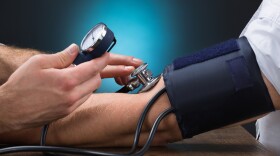The American Cancer Society ranks lung cancer as the second most common cancer in both men and women.
A screening program was created for those most at risk, but researchers report fewer than 2 percent of eligible current and former smokers have sought the scans.
Dr. , a lung cancer physician at UT Southwestern Medical Center, said the program involving low-dose CT scans was approved only in 2015, so you have to allow some time for people to learn about the program.
But, as Gerber found when creating a lung cancer screening program at Parkland Hospital, raising awareness requires effort.
‚ÄúThe way I started the program at Parkland last year was by going to the physicians who day to day are seeing these patients ‚ÄĒ patients with less education, patients at lower socio-economic levels ‚ÄĒ who have greater smoking history and greater risk of lung cancer," Gerber said. "Getting buy-in at the level of the health care system is critical. Getting buy-in and awareness to high risk individuals is also critical."
Interview Highlights
About the screening: It’s only about one-fifth the radiation dose of a standard CT scan. And it’s really fast. The individual goes into the CT scanner, they're asked to take a deep breath and hold it, then the CT scan is done and they exhale. They don’t have to get an IV placed, and there’s not a risk of an allergic reaction or other toxicity.
Eligibility for screening program: People need to be at least age 55, and depending on whether you’re looking at the United States Preventive Services Task Force or the Centers for Medicare and Medicaid, the upper age cutoff is either 77 or 80. And patients must have smoked 30 pack years of cigarettes or more. If you’ve smoked one pack of cigarettes per day for 30 years, that’s 30 pack years. Two packs of cigarettes per day for 15 years, that’s 30 pack years, and so on. If you’ve quit smoking, you may still be eligible for lung cancer screening, but you must have quit within the past 15 years. If you quit 40 years ago, you would no longer be eligible.
Why screening is important: If someone has an individual history of smoking several decades and now they’re reaching their 60s and 70s, their personal risk of developing lung cancer may exceed 15 percent. And without screening, the vast majority of lung cancers are diagnosed in Stage 3 or 4, when they’re almost never curable. If we can diagnose a lung cancer in Stage 1, when it’s very small and it can be treated with a small surgical procedure or focused radiation treatment, then that leads to a far better outcome. And the smoking piece is an integral part of it. If someone can quit smoking, that benefit is even greater than the benefit of lung cancer screening itself. If both are put together, it becomes very effective.
It‚Äôs never too late to quit: The risk of lung cancer starts dropping immediately when people stop smoking. If someone has quit smoking 20, 30, 40 years ago, then their risk of lung cancer is dropping below half of what it might have been at the peak ‚ÄĒ maybe even below 25 percent of what it was. That‚Äôs the single greatest intervention an individual can take.
Resources
Interview responses have been lightly edited for clarity and length.





